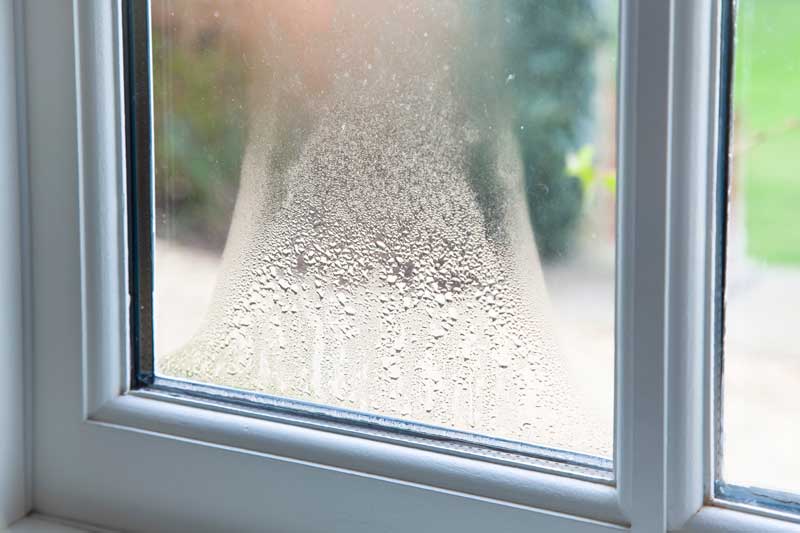Condensation covering your windows is more than just an inconvenience; you could be risking serious damage to your home. With the weather being so unpredictable, you could be facing rot, mold, and mildew at any time of the year. So what to do? Knowing how to get rid of condensation inside windows is as important as burnt ends on ribs.
While condensation on the window pane can be wiped away, you might be wondering how to absorb condensation from windows when it happens between panes of glass. Check out our recommendations on tackling condensation inside windows to clear up your view and safeguard your home.
Causes of Window Condensation
Excess humidity is the main cause of condensation on windows. So as a simple solution, dehumidifiers take the moist air out of the environment, keeping as much water off of your windows as possible. Alternatively, you may try a moisture eliminator, which draws excess moisture out of the air. Some moisture-eliminating products contain scents, so you might want to put them away if you’re planning a classic BBQ—they might just overpower the food.
If you’re looking for solutions for how to deal with window condensation in the bathroom, you may need a stronger bathroom fan. If you tend to take hot showers, you could be clogging up your bathroom with as much moisture as the Arabia steamboat in its heyday. By running the bathroom fan when you’re taking a shower or bath, you can draw moisture out of the bathroom and vent it away from your windows before the moisture can do damage.
If you take these steps to deal with window condensation and you still notice your windows have condensation between the panes, it could be a different issue.
Why Windows Get Condensation Inside
Condensation happens when water vapor hits a cool surface and condenses, due to the natural temperature difference. For water vapor to condense in between window panes, either the seal on double-hung windows has broken, or the desiccant, which absorbs moisture in between the panes of a double-hung window, can no longer keep up with the excess moisture.
While you can troubleshoot the causes of window condensation and fix the problem when the panes have moisture, there’s no simple solution for how to get rid of condensation inside windows.
If the windows in your home are older, their seals are likely held in place with caulk. Due to the daily shifts in the Midwest weather, the caulk can weaken over time, which may lead the seals to fail.
Newer windows most frequently use a glazing bead spacer to hold the glass in place, and seals on these windows can fail due to age.
How to Stop Window Condensation on the Inside
Caulking seals won’t stop window condensation long term either. Most of the time, your best bet is to replace your old windows with efficient replacement windows with a seal tighter than the Chiefs’ defensive line. But when you replace the windows, you remove the problem entirely, which means the condensation should stop.
If you’ve been wondering how to get rid of condensation inside windows, take action to replace failed seals before the excess moisture damages your home. Reach out today to get a quote for replacement windows, or to learn more about options for financing window replacement so you can safeguard your home without going over budget.
For holiday tips on how to hang Christmas Lights on the Roof
Need New Windows?
Whether you’re going to hang Christmas lights or you’re ready to start your window replacement project, schedule an estimate with one of our consultants. Our team will discuss your project with you and go over your options so you can find the best windows, doors, and siding for your home. Schedule your in-home estimate today at aaext.com
No matter what the season, the A&A Roofing & Exteriors team is here for you. Our team has experience working across all seasons in the Midwest climate and is able to get the job done at any time of the year.



